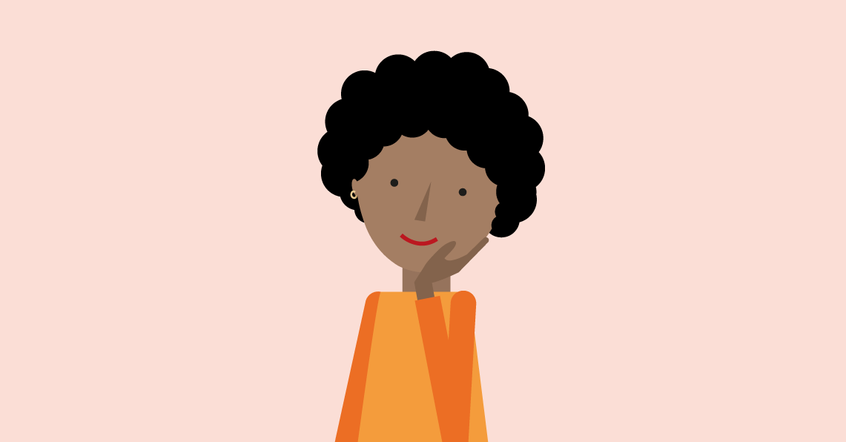Who is bell hooks and why should a teacher read her work?
“Seeing the classroom always as a communal place enhances the likelihood of collective effort in creating and sustaining a learning community.”
– bell hooks
What’s love got to do with it? According to bell hooks — everything. Her inspiring work on engaged pedagogy based on wellbeing and critical consciousness is well worth reading.
bell hooks (1952-2021) was an African-American teacher, author, feminist and social activist. Her pen name, borrowed from her maternal great-grandmother, is spelt without capital letters to draw attention to her ideas rather than her identity.
Her approach to education focuses on critical pedagogy and the theoretical aspects of education such as belonging, wellbeing and community.
Reading bell hooks’ work isn’t just good for your soul; putting her theories into practice is good for your learners. So, let’s take a closer look.
What is critical pedagogy?
bell hooks’ work builds on critical pedagogy — a way of teaching where you see the classroom through the lens of social justice. This lets you ask questions and make curriculum choices that develop a critical consciousness and awareness in learners.
As a result, learners become active participants in their lessons rather than passive consumers. They grow to understand the impact they can have on their school and society.
Today’s movement for action against climate change by children and young people around the world is an example of what can happen when young people know that they have a significant part to play in bringing change.
How does bell hooks’ pedagogy work in practice?
At a practical level, examples of critical pedagogy in the classroom are:
Multiculturalism: use images and resources that reflect the ethnic diversity of the learners you teachGender balance: give your learners opportunities to research key female figures instead of solely focusing on male onesLanguage inclusion: if the learners in your class speak additional languages, find ways to include keywords from the range of languages your learners speak to be culturally-sustaining
This approach provides a balance against the underlying narrative or unconscious bias that can dominate in society about certain norms being more acceptable than others.
What is bell hooks’ engaged pedagogy?
bell hooks builds upon critical pedagogy by taking her progressive vision even further, emphasising what she calls ‘engaged pedagogy’.
In this, she spotlights wellbeing by challenging the teacher to focus on themselves first to be able to teach in a manner that empowers learners. This is a stunning challenge for all of us because we are often so reluctant to ask ourselves:
“How am I doing?”“What self-care could I initiate?”“How can I re-energise myself after a busy day at work?”
bell hooks spurs each of us on to pause, breathe, reflect and ask these important questions.
Why is an inclusive learning community so important?
bell hooks’ focus on the classroom as a learning community emphasises her belief that power in the classroom should be authoritative, not authoritarian. When you see every learner and yourself as a participant in learning, you create an environment where everyone is welcome to contribute. It also helps to diminish the power dynamic between teacher and pupil.
She asserts that “any radical pedagogy must insist that everyone’s presence is acknowledged.”
It is in this open, inclusive atmosphere that some of our best classroom discussions can take place — hard questions can be asked and different perspectives shared.
When, for example, a 10-year-old says: “It doesn’t seem fair that all those things from Egypt are in our museum and not in theirs” you can seize the opportunity to discuss different viewpoints. This leads to some meaningful critical conversations and could also lead to some powerful persuasive writing.
What are bell hooks’ values rooted in?
bell hooks often wrote about love. This is the value that her pedagogy is rooted in. Out of it springs her focus on the holistic nature of teaching and possibilities for wellbeing, healing and belonging.
She describes love as having six ingredients:
- Care
- Commitment
- Knowledge
- Responsibility
- Respect
- Trust
She encourages each of us to ask ourselves regularly: “Does the action I’m taking have these six ingredients?”
How transformative for our schools and societies this question would be if we asked it often enough! How challenging to think of it within the strains and stresses, tensions and complexities of our classrooms, but how amazing it would be if we could start. Particularly in those moments when things are not going smoothly, and we want to react rather than respond to learners.
Why should a teacher read the work of bell hooks?
If you are tired or disillusioned with your profession, you will find a fresh, deep, life-sustaining voice to encourage you and cheer you on.
If you are new to teaching, you will find a mentor to inspire you and to model how to express your values in your classroom practice. If you are stagnating or plateauing, you will find a voice to reinvigorate, challenge, and stretch you to make your classroom a more justice-oriented, diversity-sensitive learning community.
If you’re looking for a starting point, I suggest reading bell hooks’ Teaching to Transgress, and check out this video of bell hooks in a beautiful conversation with John Powell.
For all of us, she will deepen our thinking, speak to our hearts and renew our desire to do the best we can for others.
References
hooks, bell (1994) Teaching to Transgress: Education as the Practice of Freedom. New York: Routledge.
